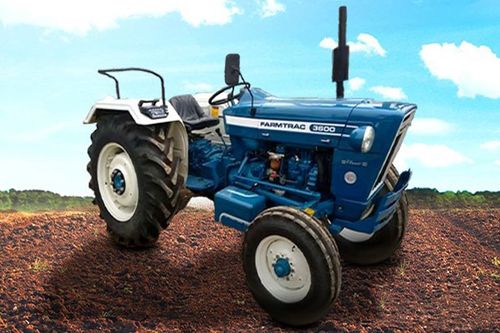Ad
Ad
The Challenges and Chances of Dairy Farming in India

Dairy farming is one of the most important and profitable sectors of agriculture in India. India is the largest producer & consumer of milk worldwide, with over 300 million cattle and 198.4 million tonnes of milk production in 2019-20. Dairy farming provides income and nutrition to millions of rural households and contributes to 5% of the national economy. However, dairy farming also faces many challenges, such as feed and fodder scarcity, hygiene and health issues, low productivity and profitability, fragmented supply chains, and poor quality and safety standards. In this article below, we will now explore the challenges and chances of dairy farming in India and suggest some ways to overcome them and improve the dairy sector.
Feed and Fodder Scarcity
Feed and fodder are the basic inputs for dairy farming, as they determine the health and productivity of the cattle. However, India faces a huge gap between the demand and supply of feed and fodder due to various factors, such as shrinking land resources, climate change, population growth, and competing demands from other sectors. According to a study by the National Institute of Animal Nutrition and Physiology, India has a deficit of 35.6% green fodder, 10.95% dry fodder, and 44% concentrated feed. This leads to undernutrition and malnutrition of the cattle, which affects their milk yield and quality.
Some of the possible solutions to address the feed and fodder scarcity are:
- They are promoting the cultivation of high-yielding and drought-tolerant fodder crops, such as maize, sorghum, bajra, Napier grass, and berseem, and improving their seed availability and quality.
- Encouraging the use of crop residues, such as wheat straw, rice straw, and sugarcane tops, as fodder and enhancing their nutritive value by using technologies such as urea treatment, enzyme treatment, and densification.
- Developing and disseminating low-cost and balanced feed formulations, using locally available ingredients, such as oil cakes, grains, beans, and molasses, and supplementing them with minerals and vitamins.
- Establishing and strengthening the feed and fodder banks, cooperatives, and industries to ensure the availability and affordability of feed and fodder throughout the year, especially during the lean and drought seasons.
Hygiene and Health Issues
Hygiene and health are the key factors for maintaining the quality and safety of milk and preventing the spread of diseases among the cattle and the consumers. However, India faces many challenges in ensuring the hygiene and health of the dairy sector, such as:
- Lack of awareness and education among the farmers about the best practices of dairy hygiene, such as cleaning and disinfecting the sheds, utensils, and equipment, and washing and drying the udders and teats before and after milking.
- Lack of access and affordability of veterinary services, such as vaccination, deworming, artificial insemination, and disease diagnosis, especially in the remote and rural areas.
- Lack of infrastructure and facilities for milk collection, transportation, and processing, such as refrigeration, pasteurization, and packaging, leads to spoilage and contamination of milk by microorganisms, toxins, and adulterants.
- Lack of standards and regulations for milk quality and safety, and lack of monitoring and enforcement of the same, which results in the production and marketing of substandard and unsafe milk and milk products.
Some of the possible solutions to improve the hygiene and health of the dairy sector are:
- Providing training and extension services to the farmers on the importance and methods of dairy hygiene and encouraging them to adopt the same.
- Improving the availability and affordability of veterinary services by establishing and strengthening the network of veterinary hospitals, clinics, and dispensaries and by providing subsidies and incentives to the farmers for availing the same.
- Developing and upgrading the infrastructure and facilities for milk collection, transportation, and processing by investing in the cold chain, processing plants, and quality testing labs and by promoting the use of modern and hygienic technologies, such as bulk milk coolers, milk chillers, and milk vending machines.
- Formulating and implementing the standards and regulations for milk quality and safety and ensuring their compliance and enforcement by establishing and empowering the agencies and authorities, such as the Food Safety and Standards Authority of India (FSSAI), and by creating awareness and accountability among the stakeholders, such as the producers, processors, and consumers.
Low Productivity and Profitability
Both are the main indicators of the performance and sustainability of the dairy sector. However, India has a low productivity and profitability of dairy farming, compared to the global standards, due to various factors, such as:
- Low genetic potential and poor breeding management of the cattle, which results in low milk yield and quality, and high calving intervals and mortality rates.
- High input costs and low output prices of milk and milk products reduce the profit margin and income of the farmers.
- High competition and low bargaining power of the farmers, especially marginal ones, who face the exploitation and manipulation of the middlemen and traders.
- Low-value addition and diversification of dairy products limit the market opportunities and consumer preferences of the dairy sector.
Some of the possible solutions to increase the productivity and profitability of the dairy sector are:
- Improving the genetic potential and breeding management of the cattle by using improved and indigenous breeds, such as Sahiwal, Gir, and Red Sindhi, and by adopting advanced and scientific methods, such as artificial insemination, sexed semen, and embryo transfer.
- Reducing the input costs and increasing the output prices of milk and milk products by providing subsidies and incentives to the farmers for the inputs, such as feed, fodder, and veterinary services, and by ensuring fair and remunerative prices for the outputs, such as milk and milk products.
- Enhancing the competition and bargaining power of the farmers, especially the small and marginal ones, by organizing and empowering them through cooperatives, self-help groups, and producer companies, and by eliminating or regulating the role of the middlemen and traders.
- Promoting the value addition and diversification of dairy products by encouraging the production and consumption of value-added products, such as cheese, butter, ghee, yoghurt, and ice cream, and by exploring new and niche markets, such as organic, fortified, and flavoured dairy products.
Fragmented Supply Chain
India has a fragmented and inefficient supply chain of the dairy sector due to various factors, such as:
- The large number and small size of dairy farms make it difficult to collect, transport, and process the milk in a timely and cost-effective manner.
- Low level of organization and integration of the dairy farms, which results in the lack of coordination and cooperation among the farmers and the dependence on the informal and unorganized sector.
- High levels of wastage and losses of milk and milk products occur due to poor infrastructure and facilities, such as cold storage, transportation, and processing, and the lack of quality and safety standards and regulations.
- There is a low level of transparency and traceability of the milk and milk products, which leads to the lack of information and trust among the stakeholders, such as the farmers, processors, retailers, and consumers.
Some of the possible solutions to improve the supply chain of the dairy sector are:
- Consolidate and scale up the dairy farms by encouraging the farmers to form groups, clusters, or cooperatives and by providing them with the necessary inputs, services, and support5.
- Organizing and integrating the dairy farms by linking them with the formal and organized sector, such as the cooperatives, private companies, and government agencies, and by facilitating contract farming, forward and backward linkages, and value chain development.
- Reducing the wastage and losses of milk and milk products by improving the infrastructure and facilities, such as cold storage, transportation, and processing, and by enforcing the quality and safety standards and regulations.
- Increasing the transparency and traceability of milk and milk products by using digital and innovative technologies, such as the internet, mobile phones, RFID, and blockchain, and by creating platforms and portals for information and communication.
Conclusion
Dairy farming is a vital and lucrative sector of agriculture in India, which provides income and nutrition to millions of rural households and contributes to 5% of the national economy. However, dairy farming also faces many challenges, such as feed and fodder scarcity, hygiene and health issues, low productivity and profitability, and a fragmented supply chain. These challenges can be overcome, and the dairy sector can be improved by adopting various solutions, such as improving the feed and fodder availability and quality, ensuring the hygiene and health of the cattle and the milk, increasing the productivity and profitability of the dairy farming, and improving the supply chain of the dairy sector. By doing so, India can not only sustain its position as the world’s largest producer and consumer of milk but also enhance its quality and competitiveness in the global market.
Features & Articles
Hidden Cost of Buying a Tractor in India Every Buyer Must Know About
Learn about tractor hidden costs like registration, insurance, implements, fuel, and maintenance to plan your budget smartly and avoid unexpected expenses....
12-Aug-25 01:22 PM
Read Full NewsHow to Save Your Tractor Clutch from Early Damage: Easy Tips for Long Life and Smooth Farming
Prevent early clutch failure in tractors with easy maintenance tips and daily checks for better performance and longer life....
04-Aug-25 11:59 AM
Read Full NewsMonsoon Tractor Maintenance Guide: Keep Your Tractor Safe and Productive in Rainy Season
Follow these easy monsoon maintenance tips to protect your tractor from rust, breakdowns, and damage during rainy season....
17-Jul-25 11:56 AM
Read Full NewsMassey Ferguson vs Powertrac: Key Differences Every Farmer Must Know in 2025
Compare Massey Ferguson and Powertrac tractors in 2025 for performance, price, features, comfort, and warranty to choose wisely....
11-Jul-25 06:00 AM
Read Full NewsTop 5 Mileage-Friendly Tractors in India 2025: Best Choices for Saving Diesel
Discover the top 5 best mileage tractors in India 2025 and learn 5 easy diesel-saving tips to boost your farm savings....
02-Jul-25 11:50 AM
Read Full NewsTop 5 John Deere Tractors in India 2025: Full Comparison of Features, Performance, and Pricing
Explore top 5 John Deere tractors in 2025 with features, performance, prices, and full comparison for Indian farmers....
19-Jun-25 12:11 PM
Read Full NewsAd
Ad
As featured on:


Registered Office Address
Delente Technologies Pvt. Ltd.
M3M Cosmopolitan, 12th Cosmopolitan,
Golf Course Ext Rd, Sector 66, Gurugram, Haryana
pincode - 122002




















